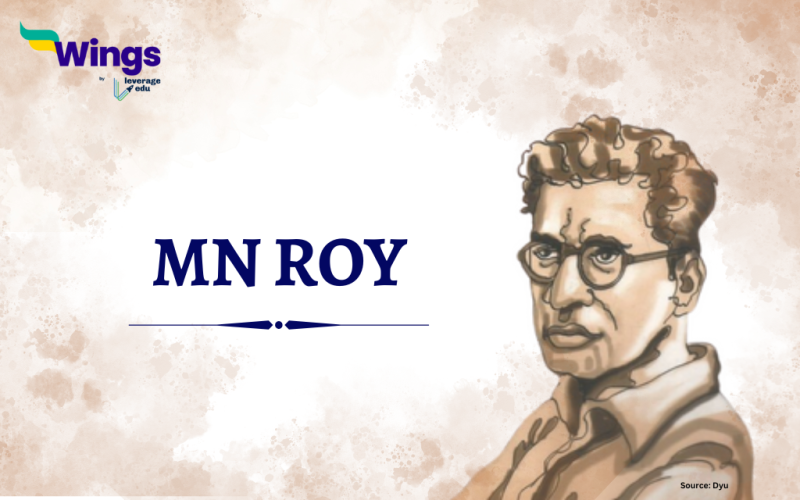The district of West Bengal gave India a Marxist, political leader, and Indian revolutionary in the year 1887. Manabendra Nath Roy, born Narendra Nath Bhattacharya, was a key figure in India’s communist movement until 1947. Driven by social and political concerns, he joined Indian revolutionary groups fighting British rule. This article will talk about everything relating to the life of MN Roy.
Table of Contents
Overview About MN Roy
Till the time India did not gain its independence, he remained a communist. However, he adopted a mixture of humanitarian and socialist approaches called Radical humanism. Here is an overview of his life throughout the years.
| Event | Details |
| Born | 22 March 1887, near 24 Pargana district |
| Father’s occupation | Priest in a temple dedicated to the goddess “Ksheputeswari” |
| Inspiration during school | Pandit Shibnath Shastri (maternal uncle) |
| Education (self-taught) | Sanskrit, philosophy, logic |
| Revolutionary activities | Joined with patriots from the village |
| Expelled from school | Reason: Involvement in revolutionary activities |
| Joined revolutionary group | Calcutta |
| Name change | Narendranath to M.N. Roy (by Dhangopal Mukherjee) |
| Impressed by | Lala Lajpat Rai |
| Organizations Founded | Communist Party of India, Radical Democratic Party, and Mexican Communist Party. |
Phases of Life of MN Roy
MN Roy had different phases in life which could be compiled into three phases. Scroll to know everything about it.
Early Days
Here are the early days of MN Roy:
- Born Narendranath Bhattacharya in 1887.
- Studied maths and ashrams, and learned Sanskrit from his father.
- Joined revolutionary groups Anushilan Samiti and Jugantar at 14.
- Meeting leader Jatin Mukherjee was a turning point.
- Participated in anti-British activities including political robberies.
Also Read- The Eminent Musician Ustad Bismillah Khan
Journey Outside India
Manabendra Nath Roy’s journey abroad opened his eyes to all the new possibilities of a better nation.
- In 1915, Roy sought arms in Indonesia with German help to fight British rule in India.
- Upon reaching the US in 1916, he faced suspicion and fled south, changing his name to Manabendra Nath Roy.
- Anti-colonial views led to arrest in the US, forcing him to escape to Mexico.
- Inspired by Mexico’s socialist system, Roy founded the Mexican Communist Party in 1917.
- He co-founded the Communist Party of India in 1920 and joined the Communist International, meeting Lenin and Stalin.
- Roy’s influence grew within the Communist International, but his mission in China failed, leading to his expulsion in 1929.
Also Read- Leander Paes: Biography, Contribution and Titles
Roy’s India Return
MN Roy came back to India in 1930 and started implementing everything he had learned outside India.
- Roy returned to India in 1930 but was jailed in 1931 for 6 years due to his involvement in a revolutionary conspiracy case.
- He and other communist leaders were accused of attempting to overthrow British rule through violence.
- During his imprisonment, Roy wrote a massive unpublished work titled “Prison Manuscripts”.
- Upon release in 1936, Roy joined the Indian National Congress but later left due to their stance on World War II.
- In 1946, he founded the Indian Renaissance Institute to promote an Indian Renaissance Movement.
- Roy passed away from a heart attack in 1954.
FAQ
M.N. Roy’s political philosophy evolved. Initially a communist, he later developed Radical Humanism, emphasizing individual freedom and reason over rigid ideologies.
Roy saw freedom as the core human drive, linked to survival and progress. It involved individual liberty and using reason to break free from constraints.
M.N. Roy organized the Radical Democratic Party in 1940. It aimed for Indian independence and socialist ideals but differed from traditional communism.
Related Blogs
Hope you got to know about MN Roy. For more related articles you can visit our page of famous personalities.
 One app for all your study abroad needs
One app for all your study abroad needs













